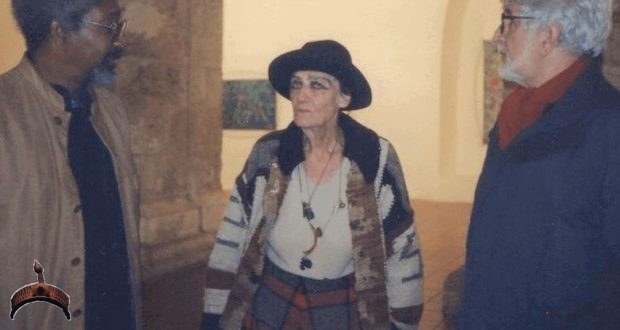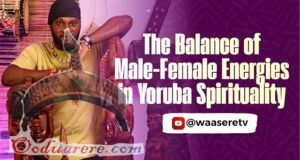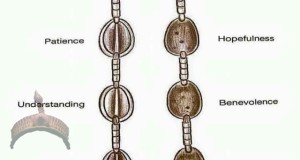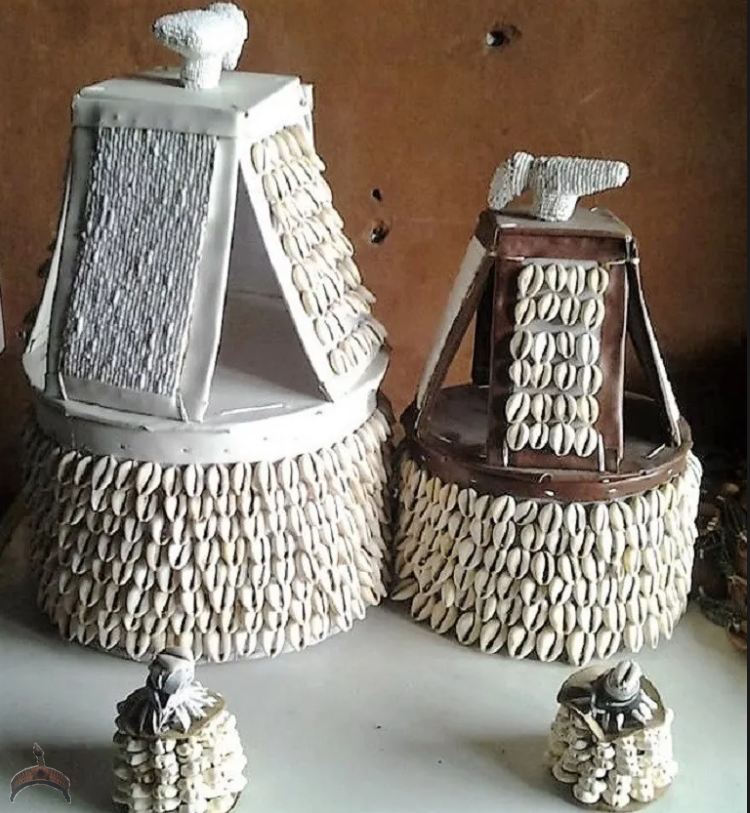Her first husband was the world-renowned Ulli Beier, a German researcher and linguist whom she met in Paris while he was working with handicapped children in 1949. At that time, Beier had just accepted a post at the University of Ibadan to teach Phonetics. The pair got married using two curtain rings for wedding rings. While doing the wedding at a London registry office and presented the curtain rings, the registrar looked at them and said: ‘A wedding is not a silly joke.’ And they responded: ‘How do you know?’.
After the marriage (which was quickly done so she could follow him), they set off to Nigeria. No, wait. They did not fly to Nigeria. They actually drove all the way across North Africa, past the Atlas Mountains in Morocco, through the stifling heat and chilly cold of the Sahara Desert. Finally, they reached in early 1950.
After separating with Beier, she would later fall in love with a local drummer, the late Chief Ayansola Oniru Alarape and they got married in 1959. They would later separate when he was maltreating her and remained single for the rest of her life, married only to the deities. She says of the experience in the book, Susanne Wenger: Artist and Priestess by Paola Caboara Luzatto:
She adopted over 12 Yoruba kids and one of them is the well-known Yinka Davies-Okundaye, who is now one of the most renowned contemporary painters in Nigeria.She adopted Nike at the age of six when she became an orphan. Susanne Wenger then formed a cooperative society for the benefit of the community and to raise her many kids.
With time, she became an inspiration for an entire generation of artists and the focal point of the Osun Grove, especially when people congregate there every August for the annual Osun Osogbo festival.
Religious Orientation
It is imperative to clarify that Susanne Wenger (Adunni Olorisha) was a very religious and spiritual person. But talking of religion, she did not follow any specific doctrine or text. Rather, she accepted and tolerated the concept of a ‘different, mystical dimension that is inherent in all that exists.’ She said: ‘creative thinking and art are not measurable since they are testimony of the truth, and this truth, the only truth has many faces. Who can count the faces of truth? All religions are ultimately ”the religion of mankind”. Art is ritual.’ Based on that, I will regard her as a pantheist.
Criticism
As expected, Adunni Olorisha became the focus of criticism, with her most vociferous critics being some Christians and Muslims who felt all she was doing was reviving paganism, heathen faiths and idol worship. Well, she disagreed with her opponents and never wasted time in firing back her own salvos. She always rejected their arguments by insisting that there was a lot in common with all the religions, including Islam and Christianity, the two principal religions in Nigeria. She said: ‘Orisha (spirit or deity) is merely a name which represents the supernatural forces which are basic expressions of life. It does not matter what you call it. It is a sacred force that represents the experience of life that informs human beingness. As with all religions, there is no true way to explain it along rational lines without leeching it of its meaning and intensely personal quality. You are a part of it and it is a part of you. You may, as so many have done, push it aside, but it remains in you, in all of us.” ‘ Until she died, she tried her best to make people understand this.
Her Last Days
Her last day on earth was a Monday. On the 12th of January, 2009, she died at the Our Lady of Fatima Catholic Hospital in Osogbo. On her deathbed, she was surrounded by some of the 15 children she adopted and asked them: ‘What day of the week is it.? What time of the day is it.?’ When they answered her, she said: ‘It is time to go. It is good. It is ok.’ And those were to be her very last words. By her side was her first adopted son, Chief Sangodare Gbadegesin Ajala and Chief Doyin Faniyi, an adopted daughter. After her demise, one of her fellow olorishas and artists, Chief Muraina Oyelami, released a statement saying: ‘Our beloved colleague, mentor and Adunni Olorisha, responded to the call of Olodumare (God) some hours ago’. One of her followers said: “She is not dead. She lives through her works. She only has become an Orisha. She only slept, she didn’t die.” Before her death, she left standing instructions to be buried the same day she died without being kept in the mortuary or any elaborate fanfare.
According to her adopted daughter, no part of her body was removed and the burial rites were performed in one of the sacred shrines in the forest grove that night by worshippers of Oro and Osun.
Her adopted daughter would later add: ‘She doesn’t want any tomb to be erected for her. She doesn’t want anyone to know where she is buried (so that it will not be turned into a tourist site). She just wants to be buried without fanfare. But we are going on with all rites which will be in segments. We are starting with a seven-day ritual and this will be followed by a 16-day ritual and another 21-day ritual.’
source
 Ọmọ Oòduà Naija Gist | News From Nigeria | Entertainment gist Nigeria|Networking|News.. Visit for Nigeria breaking news , Nigerian Movies , Naija music , Jobs In Nigeria , Naija News , Nollywood, Gist and more
Ọmọ Oòduà Naija Gist | News From Nigeria | Entertainment gist Nigeria|Networking|News.. Visit for Nigeria breaking news , Nigerian Movies , Naija music , Jobs In Nigeria , Naija News , Nollywood, Gist and more









